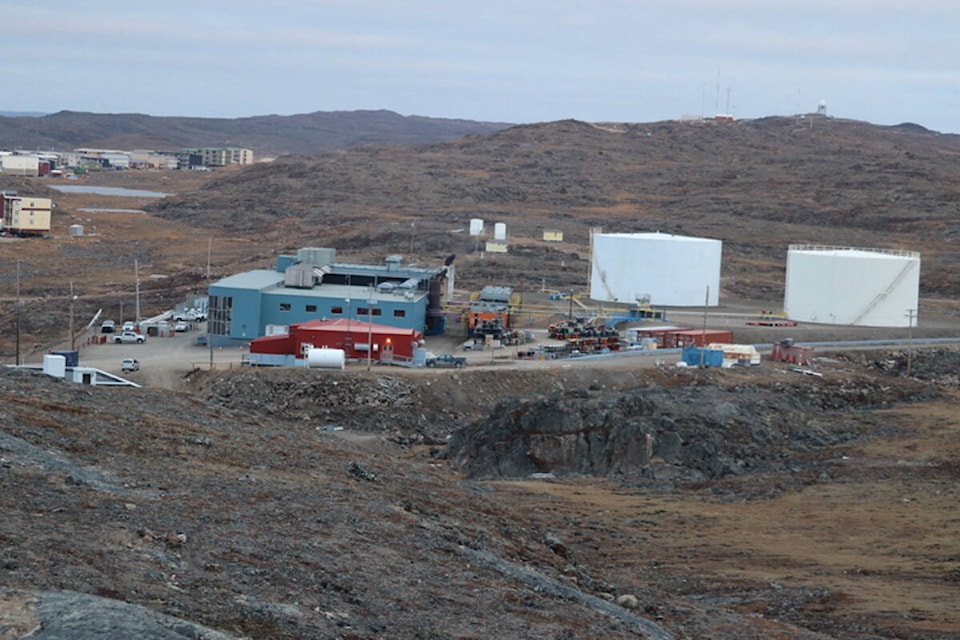As Iqaluit’s drinking water crisis carries on toward a full month, there’s still much unknown about a historical fuel spill detected near the water treatment plant in late October.
What is clear is that the Qulliq Energy Corporation’s Iqaluit power plant stands near the city’s water treatment plant, and the power generation site has experienced numerous toxic spills over decades.
There was a 10 to 15 litre fuel spill at the plant as recently as October, when a flex line was being replaced, but QEC president and CEO Rick Hunt assured that the fuel was contained within a berm, as confirmed by a subsequent investigation.
QEC also had a 300-litre spill of glycol, water and “a little fuel and oil” at the Iqaluit power plant in February, which was also “quickly and efficiently contained and cleaned,” according to Hunt.
“Department of Environment staff have recently inspected the location of the spill and indicated that there were no further concerns,” he stated.
Hunt noted that QEC has automated and manual systems continually monitoring fuel levels at the Iqaluit power plant. Staff perform daily visual inspections of the fuel tanks and surrounding areas. Fuel pipes are looked over prior to and during fuel transfers. All spills that occurred in the last 20 years have been immediately contained and remediated, he added.
But the toxic spills at the site predate the QEC’s two decades of existence. Some stretch back into the 1970s and involved as much as 4,546 litres of diesel on a single occasion: Oct. 30, 1974. There is no documented clean-up record from that incident. Several other toxic spills, including 2,455 litres of glycol in July 1999 and 1,136 litres of diesel in January 1977, are also listed as “no information available” in regards to how the contaminants were dealt with after they hit the ground.
“The Government of Canada is responsible for the majority of legacy contamination on QEC sites based upon the principle of ‘polluter pays,’” Hunt said.
Catherine Forget, communications adviser with the Department of Environment and Climate Change Canada (ECCC), directed Nunavut News to a website listing sites that the Government of Canada has agreed to remediate. Among the 27 locations listed in Iqaluit, the power plant is not one of them.
Forget noted that ECCC is currently managing two contaminated sites in the city: Iqaluit Canadian Ice Services (Building 1082) and the Iqaluit Upper Air Station.
Some of the fuel spills that occurred at the Iqaluit power plant date back to the 1970s. Forget said the amount of time required for hydrocarbons to biodegrade in the ground varies depending on the type of fuel, nutrient levels and temperature.
Diesel spills can be remediated through natural processes over a period of weeks “under optimal conditions,” she noted, but that would entail warmer ambient temperatures. Heavier oils would take longer to break down.
Other factors include the availability of oxygen, the presence of moisture and the “interaction between the hydrocarbon, the soil types and bacteria or microbes that degrade oils. These oil-degrading microbes can be found in virtually all environments,” she said.
A decision whether to dig up and remove fuel spills or to leave them in the ground depends on the numerous aforementioned circumstances and is determined through site-specific risk assessments, she added.
‘Not speculating’
As of Nov. 2, the City of Iqaluit wasn’t yet prepared to place blame for the fuel spill that recently tainted the local water supply.
“As this is an ongoing investigation, we are not speculating who is responsible at this time,” was the official response from city hall, which also declined to acknowledge whether there has been any communication with QEC or its predecessors about historical fuel spills at the power plant.
The municipality is also unsure why the water treatment plant was built next to the power plant in 1962.
“We have not located documentation regarding this location, however, this location was probably proposed given the water treatment plant’s proximity to Lake Geraldine and its ability to distribute water to the community via gravity feed at the time of the build,” city hall stated.
Relocating the municipal facility to another site is not in the city’s “immediate capital plans,” it was stated.
Work is ongoing to determine the cost to clean up historical contamination at the Iqaluit power plant, and at other contaminated sites across the territory, according to the Government of Nunavut.
“The cost estimates for these legacy sites are still being tabulated,” stated the GN’s Department of Environment, which leads the Contaminated Sites Working Group and engages the federal government on the issue.
The topic was last discussed with QEC on Oct. 29, the GN stated in early November.
